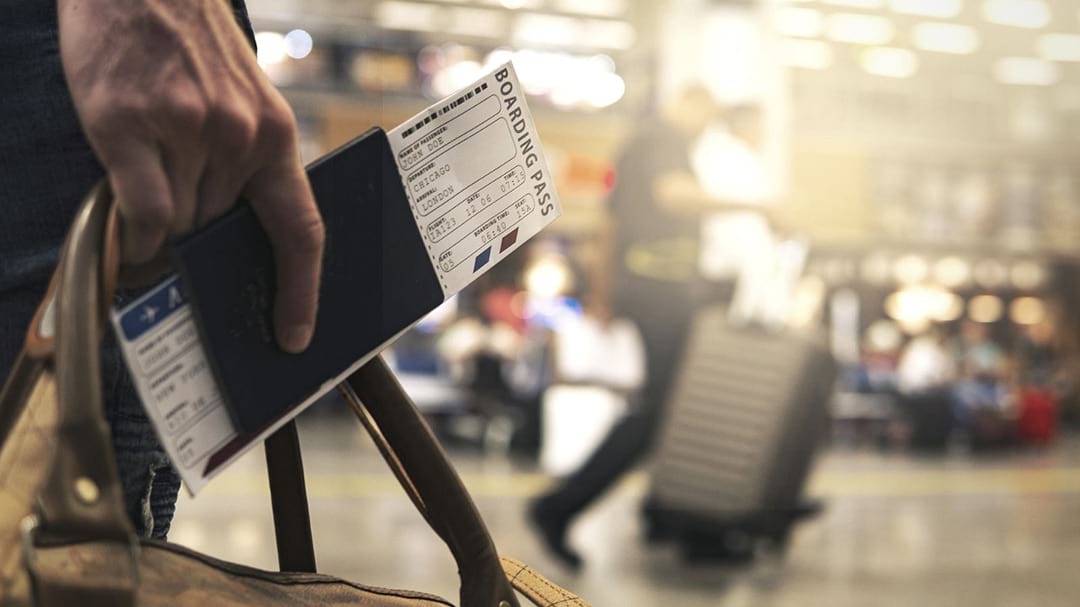The US Expat Guide To The Physical Presence Test

Many Americans abroad use the Physical Presence Test to claim the Foreign Earned Income Exclusion to save on taxes. You often read in Facebook groups or other media that to qualify you must spend less than 35 days in the US per year. This sounds simple enough, right? Unfortunately, it is more complicated than counting your days spent in the United States.
Misunderstanding the test or miscalculating your days abroad can have serious consequences. In fact, just spending one extra hour in the US could mean you miss out on the entire Foreign Earned Income Exclusion of $120,000 (2023).
In this guide, we explain how the Physical Presence Test really works and what you need to be aware of:
- What Does Physical Presence Test Mean?
- How To Calculate The Physical Presence Test
- How Are A Full Day And a 12-Month Period Defined?
- When Being Outside The US (Or Even Inside) Doesn’t Count For The Physical Presence Test
- Be Aware Of International Waters – Case Study
- Physical Presence Test Or Bona Fide Residence Test – What Is The Difference?
- Counting Days Correctly To Optimize Your US tax
Let’s get started.
If you are new to expat taxes, check also our US Tax Guide for Expats. Our experienced accountants can advise you.
To get help from our experts, schedule a consultation.
What Does Physical Presence Test Mean?
The Physical Presence Test (PPT) is one of the two tests expats can use to qualify for the Foreign Earned Income Exclusion. (The Bona Fide Residence Test is the other one – we compare both further below.)
Simply, to pass the PPT, a US taxpayer must be physically present in an eligible foreign country or countries for 330 full days in any 12-month period. It sounds simple but calculating this can be surprisingly complex.
But before we get into how to calculate the Physical Presence Test, you maybe be wondering why it’s so important.
If you pass the Physical Presence Test and a few other requirements, you can exclude up to $126,500 from income taxes (2024) with the Foreign Earned Income Exclusion (FEIE).
On IRS Form 2555, the number of days spent abroad is also used to calculate the exclusion amount.
Before we go too much further, if you’re not familiar with the Foreign Earned Income Exclusion (FEIE), be sure to check out our Guide to the Foreign Earned Income Exclusion.
Now that you have a general understanding of the Physical Presence Test and the FEIE, let’s discuss how to calculate the days abroad.
How To Calculate The Physical Presence Test
You need to be physically present in an eligible foreign country or countries for 330 full days in any 12-month period.
So, what does the IRS mean when they use terms such as “full day” and “12-month period”? What is considered a foreign country for this test?
Understanding these terms is important because this test offers no leeway. The IRS is strict about how to calculate the Physical Presence Test.
Before we go too much further, it’s helpful to understand what the Physical Presence Test is not. Many people misunderstand the test and think that it means spending less than 35 days in the United States per year. This is a common oversimplification of the requirement, which can lead you to lose out on the entire Foreign Earned Income Exclusion. More about it below.
Instead, the Physical Presence Test is about whether you spent 330 full days in eligible foreign countries during a 12-month period.
How Are A Full Day And a 12-Month Period Defined?
A full day abroad is 24 hours, from midnight to midnight.
This means that if you arrive in a foreign country at 2:00 pm local time, your first full day abroad does not start until after midnight. The 10 hours between 2:00 pm and midnight don’t count as time in a foreign country, even though you are in a foreign country.
A 12-month period is any consecutive 365-day period that starts or ends in the tax year.
These 12 months do not have to be a calendar year. Instead, the 12-month period can actually start mid-year. This is especially useful for expats who move abroad during the year.
For example, you move to New Zealand on a work assignment on August 15, 2024. You are present in New Zealand until August 14, 2024, except for a two-week trip back to the US in December for vacation. In total, you are in New Zealand for more than 330 days and you pass the Physical Presence Test. This means that as long as you meet the other requirements, you can claim the Foreign Earned Income Exclusion for your time in New Zealand.
When Being Outside The US (Or Even Inside) Doesn’t Count For The Physical Presence Test
To pass the Physical Presence Test, you must spend at least 330 full days in a foreign country. This does not automatically translate to less than 35 days in the US because being in a foreign country per IRS definition is not the same as being outside the United States. Americans abroad need to be aware of:
- Disqualified countries
- International waters and airspace
- Connecting travel through the US
Disqualified countries are listed in IRS publication 54. Almost all countries qualify as a foreign country unless you are there in violation of US laws and travel restrictions. However, it´s worth mentioning that the term “foreign country” doesn’t include Antarctica or U.S. territories such as Puerto Rico, Guam, the Commonwealth of the Northern Mariana Islands, the U.S. Virgin Islands, and American Samoa.
International waters and airspace are not foreign countries either. So, the time you spend there you cannot count as a part of a full day abroad. While this may seem obvious, it can cause issues for expats on cruises or working at sea. Our example below shows how important it is to keep detailed track of locations.
Connecting travel through the US can also have an impact. If you are in transit between two points outside of the United States and are physically present in the United States for less than 24 hours, then the IRS does not treat you as present in the United States.
The IRS treats US airports during international transit as international airspace for the purpose of the FEIE. While transit time of less than 24 hours does not count as a day in the States, it neither counts as a day in a foreign country.
For example, when flying from Tokyo to Mexico City with a six-hour layover in LAX, the time in Los Angeles is not considered time in the US. The IRS treats it as time spent traveling over areas not within any foreign country.
Be Aware Of International Waters – Case Study
As mentioned earlier, the IRS does not consider international waters a foreign country. Keep that in mind when planning that nomad cruise or other stays on board a vessel. This can be especially challenging for crew members on a ship.
We had a case with a cruise ship employee, where we had to track physical presence down to the hour to get her tax savings. Let’s call her Jane.
During the previous year, Jane had spent the majority of her time on a cruise ship or in a foreign country where she qualified as a bona fide resident.
But she had filed her taxes as if she were still living in the United States. When she realized her mistake, she approached us for assistance.
The tax laws for cruise ships are very specific. Depending on whether the ship is in international waters or within the waters of a foreign country, income is taxed differently.
To amend her return, our team tracked the movements of the cruise ship down to the hour so that we could see where Jane had spent each day. With this information, we were able to determine what income was taxable (in US and international waters) and what was not (when she was in a foreign port and traveling in the waters of a foreign country).
Finally, using a little-known ruling called Roger’s Case, we argued to the IRS that they owed her a refund. In the end, Jane received a refund of nearly $10,000.
Physical Presence Test Or Bona Fide Residence Test – What Is The Difference?
The IRS offers two options to qualify for the Foreign Earned Income Exclusion, the Bona Fide Residence Test and the Physical Presence Test. So, what is the difference? Is one better than the other?
The Physical Presence Test is strictly quantitative without any leeway. If you miss the number of days by even a few hours, you lose the entire Foreign Earned Income Exclusion.
The Bona Fide Residence Test on the other hand is not as limited with regards to the number of days you can spend in the US. While the number of days spent in the US should be reasonable there is not a specified limit. Of course, this flexibility can have disadvantages. Because the Bona Fide Residence Test is more subjective, the burden of proof is higher in the case of an audit.
For instance, the IRS would seriously question your Bona Fide Resident status if you were spending 6 months of the year in the US. We generally recommend spending no more than 3 months of the year in the United States.
Also remember, the more time spent working in the US, the more income will be allocated as US source income. You cannot exclude that income with the Foreign Earned Income Exclusion, which means more taxes!
Time spent in the States is not the only factor for Bona Fide Residency – ties to your foreign home play a major role.
Many people use the Physical Presence Test during their first year abroad. Then, once established in a foreign country they may switch to the Bona Fide Residence Test if they qualify.
Counting Days Correctly To Optimize Your US tax
As you can see, the Physical Presence Test is not quite as simple as it first seems. Still, because the IRS clearly spells out the rules, it is clear-cut.
Track your travel dates meticulously and keep (digital) copies of itineraries in case of an audit. Your accountant will review your dates and determine the best 12-month period to optimize your US tax return.
In some cases, using the Bona Fide Residence instead of the Physical Presence Test makes more sense. An experienced accountant will help you decide.
Also, remember that income earned while physically present in the States is taxed there. You cannot exclude it with the Foreign Earned Income Exclusion. But there is an upside. You can use that non-excluded income to contribute to an IRA. This is another reason for keeping track of your travel details and having an accountant guide you.
To ensure that your expat taxes are optimized, schedule a consultation with one of our expert expat accountants.
Ready to seek assistance with your US taxes?

Vincenzo Villamena, CPA
Stay Informed With The Online Taxman Newsletter
Your Title Goes Here
Text goes here






